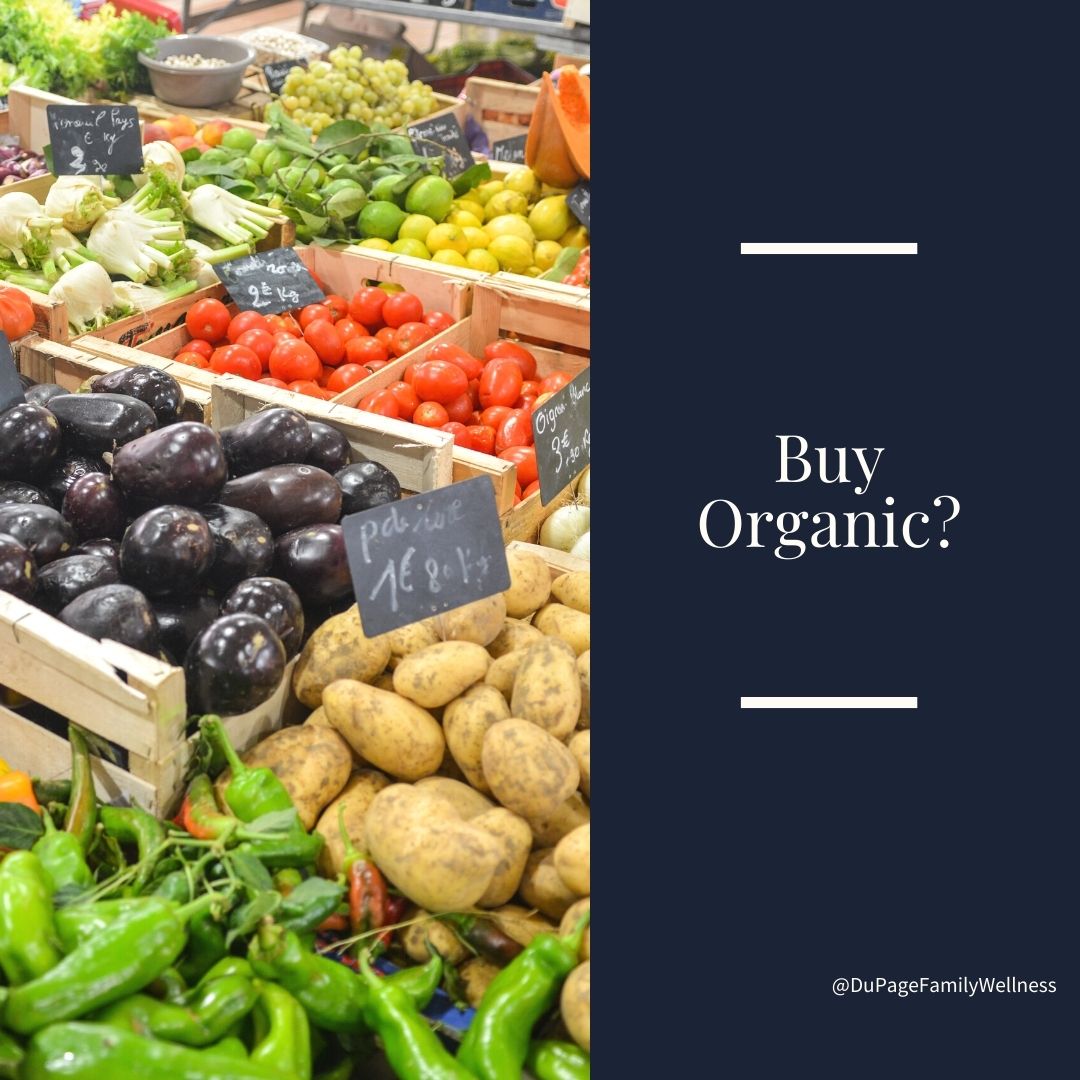 I've wondered whether there is enough benefit in organic produce to justify the extra cost. Since I changed my diet to "eat real food", I thought that eating meats and vegetables, rather than processed foods, was good enough. A few weeks ago, I attended a nutrition seminar and the topic of buying organic came up. I had one of those "lightbulb" moments.
I've wondered whether there is enough benefit in organic produce to justify the extra cost. Since I changed my diet to "eat real food", I thought that eating meats and vegetables, rather than processed foods, was good enough. A few weeks ago, I attended a nutrition seminar and the topic of buying organic came up. I had one of those "lightbulb" moments.
The doctor teaching the seminar explained that toxins are stored in your fat cells. The body wants a barrier from the toxins, so it creates more fat to act as a buffer around the toxic substances. WOW!!
Usually, people think that you put on fat when you consume more calories than you burn. Current research, however, shows that fat results when hormones and blood sugar are out of balance.
While I have understood for a while that the food we eat impacts our hormones, I didn't make the connection that our bodies were purposely contributing to this hormonal change in order to protect us.
Could eating non-organic foods, doused in chemicals, contribute to weight gain?
I did more research, and found that the chemicals in and on foods, even food normally considered to be healthy, can disrupt our hormone balance and contribute to weight gain!
There is a new word, obesogen, used to describe these substances. Many articles, both technical and mainstream, describe "How Chemicals in Food can Make You Fat."
Obesogen: Chemicals that inappropriately alter lipid homeostasis and fat storage, change metabolic setpoints, disrupt energy balance or modify the regulation of appetite and satiety to promote fat accumulation and obesity.
How did we get into this situation?
A Look Back at History
Organic farming is not new. The book "Founding Gardeners: The Revolutionary Generation, Nature, and the Shaping of the American Nation" by Andera Wulf explains the passion our founding fathers had for the land. Gardening, agriculture, and botany were ingrained in the character of George Washington, Thomas Jefferson, James Madison and John Adams, and farming was part of the vision of greatness of the new nation. Until agricultural chemicals and pesticides came on the scene, what we call organic farming today was just normal farming.
During WWII, The US military used DDT to control the spread of diseases in Europe and in the Pacific. Right after the war, DDT was released to agricultural companies and became the gold standard for insecticides. In fact, agriculture received most of the leftover chemicals created for war time use. Other chemicals were used in fertilizers. At this time, it was not known that these materials were highly toxic and carried very dangerous risks.
When farmers began using these new chemicals, consumers were not aware of the change in the new pesticide laden products. The use of pesticides and fertilizers grew rapidly, and is the standard practice today. When word got out that the new way of farming included toxic materials, it gave rise to the “organic” movement.
What does the USDA Organic Label mean?
You’ve probably seen the small green USDA Organic label on fruits, vegetables, and other products. To earn this label, the growing area must be free of chemical synthetic pesticides for at least three growing seasons. If a product has multiple ingredients, 95% of ingredients must be grown organically in order to earn the Certified USDA Organic seal.
Is There a Better Option than Organic Produce?
Yes! Foods grown locally and in season have more nutrients than organic foods purchased from the grocery store. When out of season produce is shipped across the country or across the ocean to your local grocery store, the nutrient value starts to deplete as soon as the food is harvested. The longer food has been out of the ground before you eat it, the greater reduction in vitamins and nutrients. Many small local farms are not able to call their crops "organic" because qualifying for this label is too expensive. Talk to the farmer and ask them about their farming practices.
Recommendations
The best option is to buy organically grown produce from a local farmer. Go to a local farmer’s market (Illinois Directory) or buy through a Community Supported Agriculture program (CSA). The second option is to buy organic produce whenever possible. The Environmental Working Group measures the toxins on/in produce grown conventionally (using synthetic fertilizers and pesticides). They publish the most contaminated on a list called the "Dirty Dozen", and least pesticide laden on a list called the "Clean Fifteen". More details can be found at the Environmental Working Group website.
Your Challenge
Think about the produce that you buy this week and look at the dirty dozen list below. For those items on your shopping list, look for an organic option in your grocery store. Or better yet- check out a local farmer’s market and get some fresh local produce that is in season! Start paying attention to the source of your food.
2021 Dirty Dozen - 12 Most Contaminated (Buy Organic when possible)
- Strawberries
- Spinach
- Kale, collard & mustard greens
- Nectarines
- Apples
- Grapes
- Cherries
- Peaches
- Pears
- Bell & hot peppers
- Celery
- Tomatoes
2021 Clean 15 (okay to buy these conventionally)
- Avocado
- Sweet corn (be careful of GMO)
- Pineapples
- Onions
- Papayas
- Sweet peas
- Eggplant
- Asparagus
- Broccoli
- Cabbage
- Kiwi
- Cauliflower
- Mushrooms
- Honey dew melons
- Cantaloupe
Where you buy organic or local foods? Do you recommend a CSA? Let us know on Facebook!
Dr, Jamie Thomure and Joelle Kurczodyna, NTP

